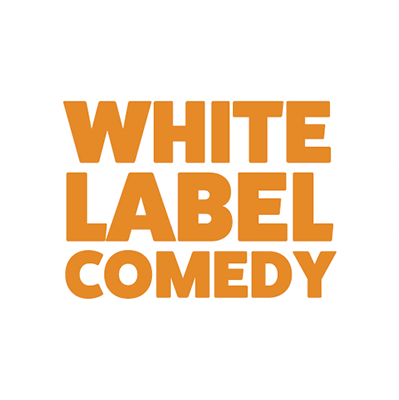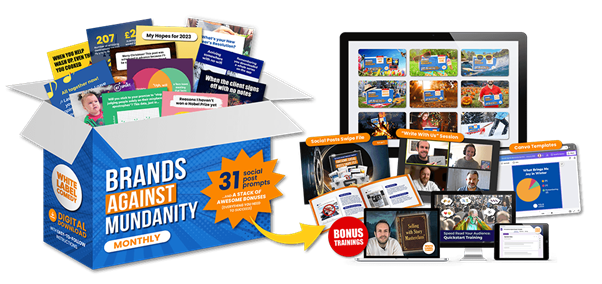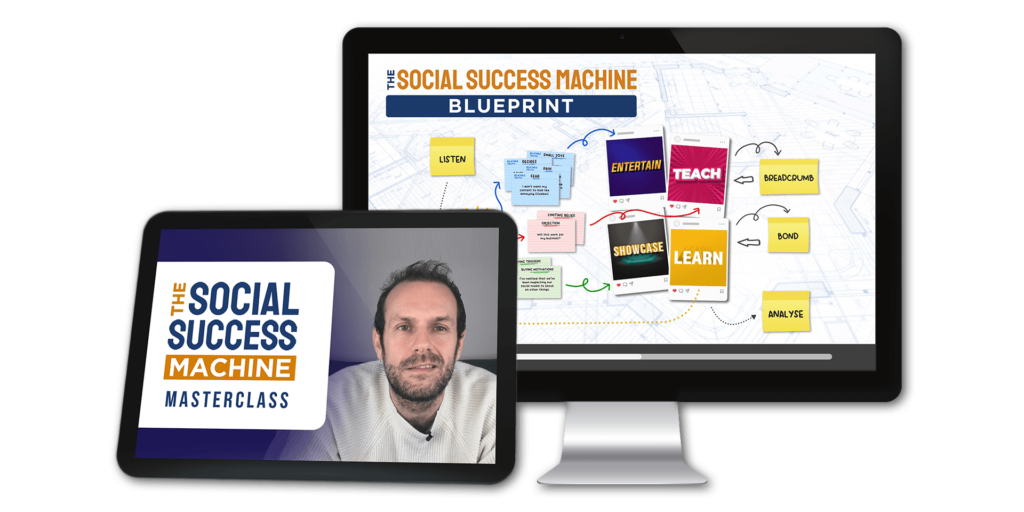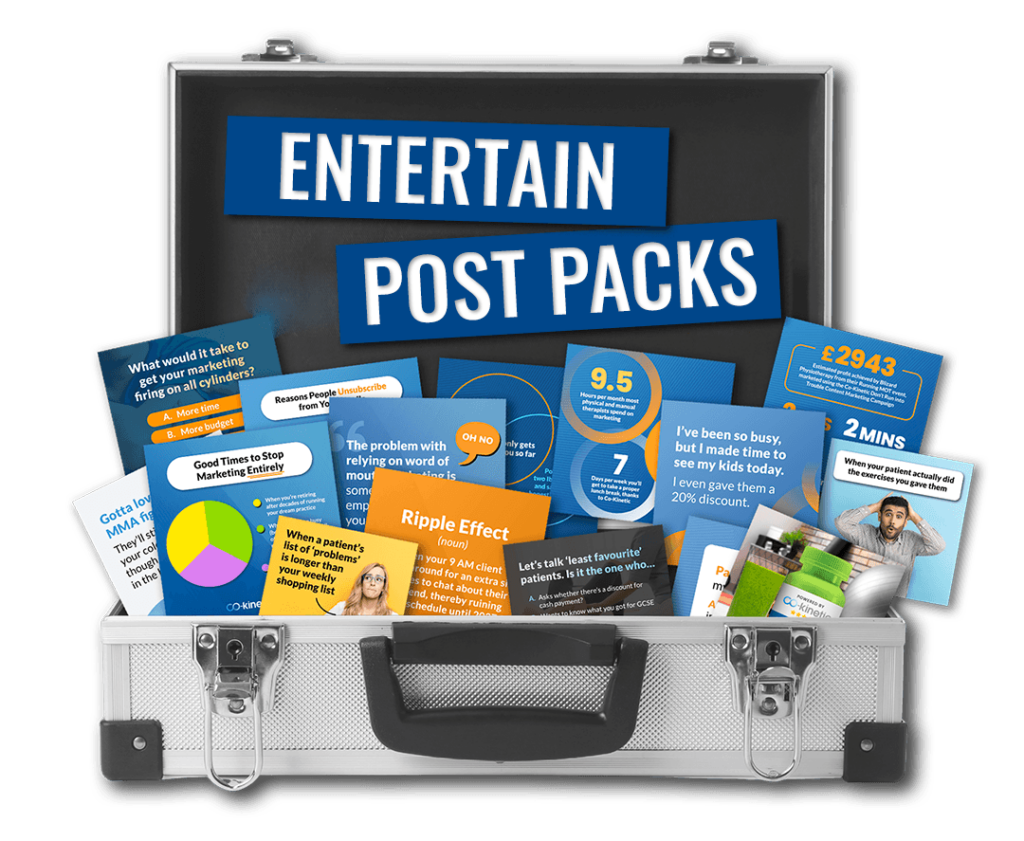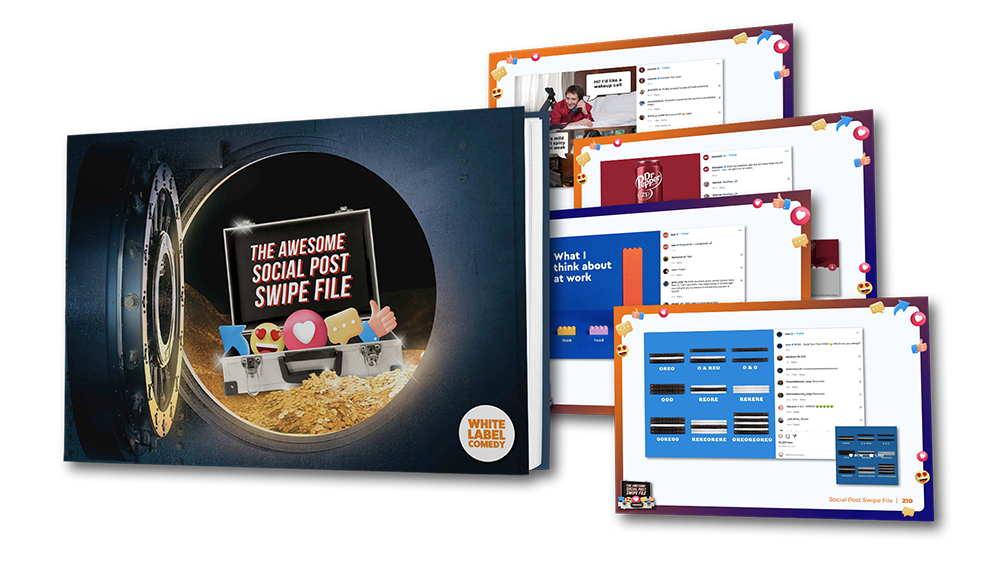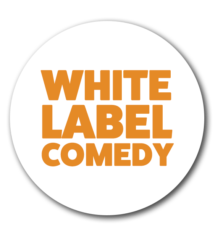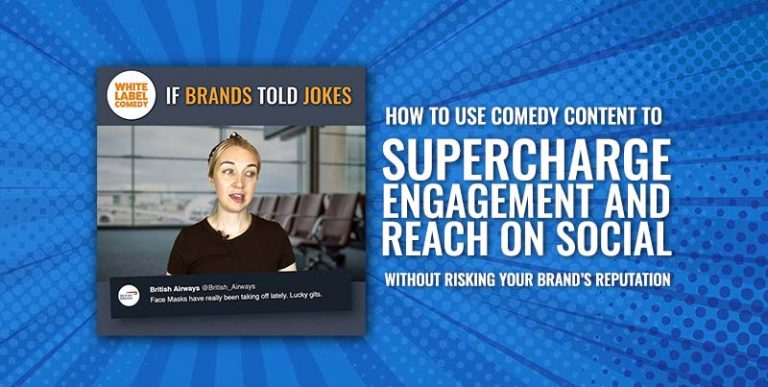The social media landscape can be scary and confusing. You’re constantly told you need a strong social media presence – so you build a team of social media execs and community managers, and they start posting.
You’re told consistency is key – so you make sure they stick to a rigid schedule, even when they’ve got nothing much to say.
And when no one engages with your posts, you shrug it off – it’s “the algorithm”. The cards are stacked against you. You start paying platforms to promote your posts – believing it’s the only way you’ll ever get your content seen.
If any of this sounds familiar, then I’m going to go out on a limb and guess that you don’t yet have an effective social media marketing strategy in place. And that’s often the case, even when you’ve hired a supposedly reputable social media management company.
But that’s ok – because in this article we’ll walk you through the simple five-step process that we use to help our own clients develop highly effective social media marketing strategies that ensure each piece of content they create gets maximum reach, engagement, and impact.
As a social media agency that just happens to be powered by a hive-mind of comedy writers – we will of course relate each and every step back to the use of humour in your marketing efforts. But even the most straight-laced of brands can follow these same five steps, and get a solid marketing plan at the end of the process.
Five steps to an effective, engaging, personality-led Social Media Marketing Strategy
Step One – Identify where you are right now

Before you can plan the route to where you want to be, you need a thorough assessment of where you are right now – otherwise you’ll have no way to know whether or not your new strategy is actually having any kind of impact.
Things we highly recommend you make a note of:
- Which social networks are you active on?
- How active is active? How often do you post?
- Who is your current audience?
- What does your current audience think of your content?
- Qualitative. What kind of feedback / comments do you get on your posts?
- What kind of reaction does an average post get?
- Quantitative. It’s useful to note the “total” likes / reactions / shares / engagements etc, as well as those same figures as a percentage of your following, so that as your audience grows you’re able to chart any increase in performance in both absolute, and relative terms.
Step Two – Identify your ideal customer
![]()
Who – in an ideal world – do you want to be buying your product or service? Not necessarily your existing customers, but the ones you wish you had. The ones that your refreshed marketing materials need to be speaking to.
How much do you know about your ideal customer? If the answer is “not much”, it might help to carry out some market research, get to know your target market, and draw up a highly focused buyer persona.
Don’t just learn your ideal customer’s age, location, job title and income – learn what makes them tick. Not only the pain points that you can tell them your business solves – but their likes and their loves. The TV shows they enjoy, the sports they watch, the references they “get”. The more you can get inside your head, the easier you’ll find it to craft content that engages them.
Step Three – Define Success

If you haven’t decided what success looks like, you’ve got no way of knowing whether or not your social media strategy is actually having an impact.
What will your key performance indicators (KPIs) be? Do you want more Leads and inquiries? More sales? Do you want raised brand awareness?
I can already tell your answer is “all of them, please” – and that’s ok – but pick the one that matters the most, and make sure it’s SMART. (Specific, measurable, achievable, relevant, and time-based).
Don’t just say “I want to increase our Twitter following”, say “I want to increase our Twitter following by 1,000 new followers – by the end of next month”.
Don’t just say “I want more engagement on our posts”, say “I want to double the engagement an average post gets by the end of 2020”.
And for heavens sakes don’t say “I want to go from new kid on the block to world dominating superpower by the end of the week” – because remember, your targets need to be achievable.
Once you’ve chosen your goals, give them pride of place – in a document that the whole team can see, or has easy access to – and refer to them regularly. It’s no good just setting these goals and then placing them in a draw to be forgotten. Keep them front of mind at all times.
Step Four – Create some content

You’ve laid the foundations, and now – finally – it’s time for content creation.
If you’re wondering why we made you go through all of that prep work first, it’s pretty simple.
Content for content’s sake is pointless. Every single piece you publish, whether a single tweet, or an SEO-optimised collection of blog posts, needs to have a purpose, and it needs to have a message.
Any social media marketing company more keen on cashing your cheque and getting to work than they are on assessing your current position, getting to know your target audience, and working out how best to measure success – be very cautious indeed.
But here’s the problem: if your purpose, and your message, are too “obvious” – it can be about as effective as standing in in the middle of nowhere, holding a big sign that says “buy things”.
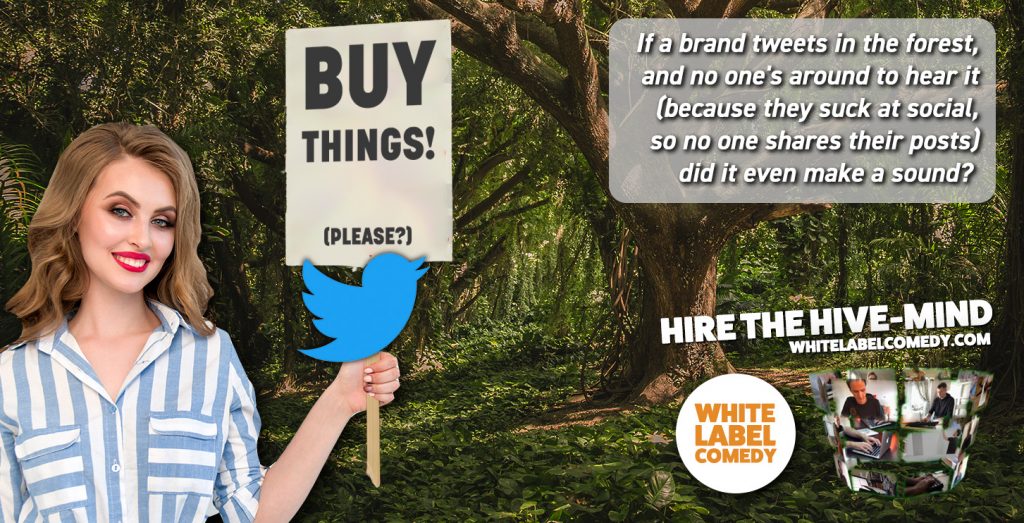
Your audience is savvy – and if they feel like you’re trying to “sell” them, they’ll switch off. So instead, you need to entertain and engage them.
But if all you do is entertain and engage them – and they never actually turn into customers – then you’re wasting time, and money, just shouting into the social media void.
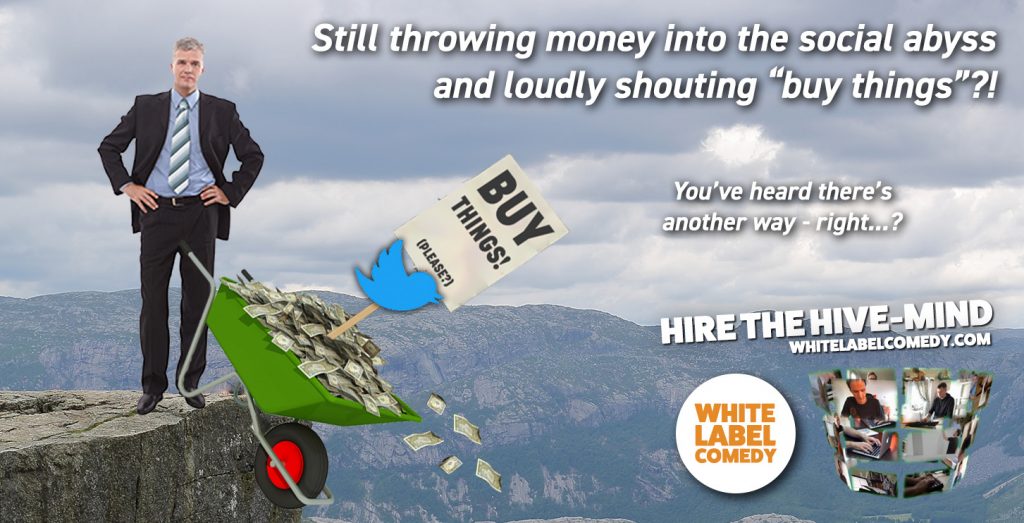
Which is why you need to find a middle ground. You need to entertain and engage – while keeping your brand messaging present. Sometimes just below the surface, sometimes just above – but always there.
Unsurprisingly, I’m about to make the case the comedy’s a great way to do that – but give me the benefit of the doubt, I promise it’ll all make sense.
Firstly – a “joke” is really just two separate ideas that shouldn’t fit together given a perfectly placed “twist” that makes them fit together perfectly.
This means that using the same techniques as late night talk show joke writers have been using for decades, you can craft entertaining content that just happens to speak to your brand’s values.
Just take something everyone knows about your brand, and a topic or story that your ideal customer (from Step Two) will relate to – and craft a neat twist that smashes them both together, in a way that “clicks”. Make sure what you’re left with also paints your brand as the hero – and you’re ready to go.
Sometimes the results are laugh out loud hilarious. But even when they’re just cute and amusing – it can still be a great route to a fresh perspective, and a new angle for your content.
And – need we remind you – it’ll always be more effective than simply shouting “buy things, buy things” until you’re blue in the face.
You’ll notice that so far we haven’t really spoken about the different types of content – and that’s because these principles apply across the board. Whether you’re keen to generate viral memes for Twitter, thoughtful blog posts for LinkedIn content marketing, Long-form posts for Facebook, or arty images for Instagram.
Start by deciding what you want to say, then find a fun, funny way to say it, that speaks to your ideal customer, and paints your brand as the hero – and you’ll start to find your content actually achieving its stated aims.
It can also help to build a content calendar – but be careful. Remember earlier we talked about how easy it is to fall into the trap of obeying a posting schedule so rigidly that you’re broadcasting to the world even when you’ve got nothing to say? A good content calendar isn’t just a list of dates, platforms and a required number of posts – it’s a tool you use to plan ahead, so you know you’ve always got something worth saying.
Big holiday coming up? Great – come up with a clever angle that ties your brand in with that holiday in an entertaining way and you’ve got something worth posting.
Seismic political event on the horizon? Brilliant – can you find a way to pitch your brand as the hero, regardless of the political outcome?
Plan your content wisely (a content calendar can help) use the techniques comedy writers use to connect the dots and link ideas – and you’ll always have something to say.
(And if you haven’t got the time to generate all of that content yourself, find a social media marketing agency to take on the work for you. Just make sure they “get” you and your brand – or you’ll be throwing good money after bad).
FYI – when it comes to SMM tools – you either use one, or you are one. So if you don’t yet have your tech stack sorted – check out our friend Larry Kim’s rundown of the 18 best Social Media Marketing tools right now.
Step Five – Measure success, and double down on what’s working

Remember the metrics we decided would be the measures of our success in Step Three? Here’s where they come into play.
Each week, look at how each of your posts performed – and work out what the best, and the worst, have in common. The following week – double down on the most successful elements.
You might be surprised at just how big an impact small changes can have, too. Got a joke that paints your brand as the hero? Switch out the villain for one that resonates even more tightly with your audience and you might see a spike. (You’ll also be able to recycle your content as it’s been refreshed).
Personalise your posts by addressing your audience directly (whether that’s “Hey LinkedIn” or “Hey Soccer Moms”) – and again, you might see an uptick in engagement, as more of your ideal customers get reeled in by that opening hook. But you also might not – that’s why testing is so important.
Incidentally – even though this post is all about organic social media marketing, one of the best ways to test is actually to use Paid Ads. Facebook in particular is great for using Paid Ads to A/B test how audience engagement changes on the basis of specific variations in your messaging and brand sense of humour – because you’re able to split test the posts and make sure each prospect only sees one version.
Using our BSOH (Brand Sense of Humour) A/B Testing Protocol, brands can use Paid Ads to quickly and efficiently learn about their audience – and then apply those learnings to their organic social posts, and continue the improvements at a more natural pace from there.
One final note: don’t assume anything.
You might think a certain type of humour wouldn’t play well with your audience. Have you tested that theory?
You might assume your audience loves a particular tone of voice. Do you know that for sure?
Be willing to try anything and everything – and let the data guide you. And if that sounds like a risky marketing tactic – here’s why it isn’t.
The algorithms protect you.
Make a joke that your audience doesn’t love – so long as it’s not offensive, only a handful of people will ever see the post any way. Put out a post that isn’t adored – and you’ll be the only one who notices the tumbleweed.
Ordinarily, that sad fact is the bain of a social media marketer’s life – but when you’re A/B testing in order to perfect your brand’s social media persona, you really can use it to your advantage.
Can we help?
White Label Comedy isn’t your typical social media marketing agency. We’ll let someone else manage your feeds – but what we’d love to do is resource with the comedy content you need to fill them. Whether you’re in real estate or the restaurant business – our social media marketing services cover every kind of content you can think of.
